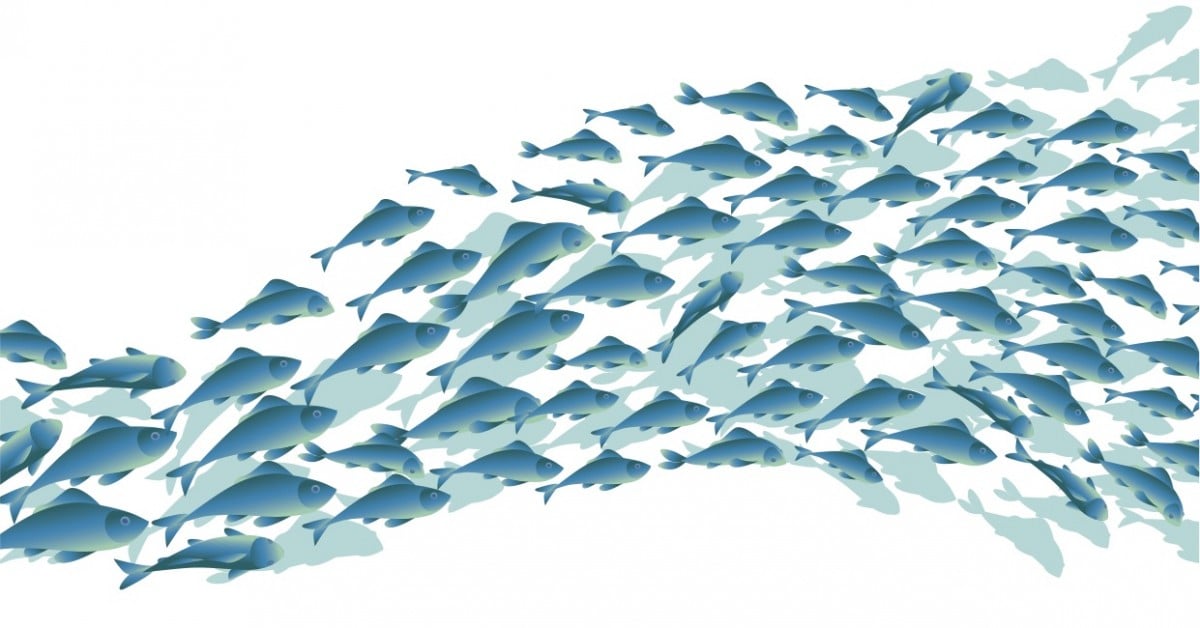GFI’s ATLAS tool helps alternative seafood entrepreneurs prioritize seafood species

Global demand for seafood is growing rapidly, with a 30 percent increase in demand projected by 2030 compared to 2010. Alternative seafood–plant-based, fermentation-derived, and cultivated fish and shellfish–has the potential to meet growing global demand for seafood as part of a more sustainable, healthy, and just food system.
Globally, people regularly eat well over 100 species of fish and shellfish. Choosing a species of focus can be a time-consuming process for alternative seafood startups, entrepreneurs, researchers, and others looking to contribute to the industry. That’s why GFI’s Sustainable Seafood Initiative is launching ATLAS, the ArcheType Library for Alternative Seafood. ATLAS provides both quantitative and qualitative information to inform species selection and accelerate the development and commercialization of alternative seafood products.
ATLAS is the second half of PISCES/ATLAS, and you can find the tool integrated into the same AirTable database you might have already been using to explore PISCES’ species-level characterization data.
We have developed this tool on the “archetype” instead of the species level. Archetypes are the descriptions of categories of seafood that you might see on a menu: We compare shrimp to salmon instead of Salmo salar and Penaeus monodon. Seafood classification is complex, and we had to combine data from varying levels to make ATLAS useful. You can find more information about this in the PISCES/ATLAS User Guide.
How should we prioritize species for alternative seafood development?
While there is no “right” answer to how to prioritize different products for plant-based, cultivated, and fermentation-derived seafood development, we have chosen a few categories of data that we think will be of interest to those working in this industry.
- Sustainability: Alternative seafood has enormous sustainability potential. We examine the sustainability of current conventional practices to identify products with the greatest potential gains. The data in ATLAS is composed of scores assigned to species by Monterey Bay Aquarium’s Seafood Watch, greenhouse gas emissions captured in the Seafood Carbon Emissions Tool, and GFI’s own literature review.
- Animal welfare: Alternative seafood will allow us to produce seafood without having to catch or raise an animal. To compare archetypes’ potential animal welfare improvement against each other, we compare their performance on two metrics: average edible portions–animals with lower portions of their weight actually eaten by humans represent high priorities for alternative seafood development–and the maximum estimated number of individual animals consumed each year by archetype.
- Public health: Plant-based, cultivated, and fermentation-derived seafood allow consumers to enjoy the fish and shellfish they love without the risk of mercury contamination. We include FDA data on mercury concentrations by archetype to compare the public health advantages of different archetypes.
- U.S. market size: Archetypes with large conventional seafood markets represent high-priority areas for developing alternative seafood counterparts. We measure market size through retail (using Nielsen data), food service (using data on 500 U.S. restaurants from Changing Tastes), and imports (using NOAA data).

Resource
Aggregating data for alternative seafood
Use our open-access databases to explore how scientific taxonomies and evolutionary relationships map onto culinary categories of seafood.
How do I use ATLAS?
To view archetype-level data on all criteria and their associated scores, please check out the Main View in the ATLAS tab of PISCES/ATLAS. If you’d like a high-level view of how archetypes compare to each other, change the view to look at “Scores Only.” Or to dig further into the data, select any of the tabs to the right to get more information on each criterion. Remember, archetypes are groups of species defined by how they’re typically used in a culinary setting, not by their evolutionary relationships. The scientific names of the species associated with each archetype are listed and linked to PISCES.
You can explore with the ATLAS Ranking Tool here, which allows you to adjust the weight applied to each category of criteria and see how the overall score of each archetype changes. You can also see or change the code directly in this version of the ranking tool.
For more information on how to use ATLAS, please refer to our PISCES/ATLAS User Guide.
What’s next?
This is just the first version of ATLAS, and we will continually add to and update this tool. In the near future, we plan to:
- Add more detailed animal welfare analysis, more archetype-specific consumer data, and more nuanced environmental analysis.
- Continue to fill in missing data in all categories.
- Improve our scoring methods, including how we average across species to obtain archetype-level scores.
- Develop a more straightforward user interface to ensure that ATLAS truly benefits the entire alternative seafood community.
- Expand the usefulness of this tool beyond the United States.
Once you have had a chance to explore the tool, we would love your feedback. You can share it with us here.
Now is a critical moment for our oceans. Sign up for our monthly newsletter, The Alternative Protein Opportunity, which covers the latest plant-based industry news, market and consumer research, policy updates, helpful resources, and upcoming events.

